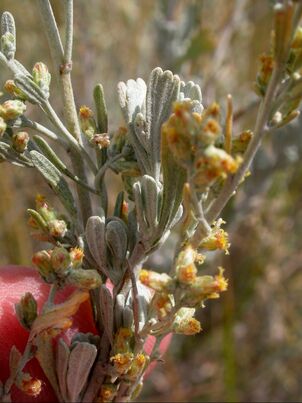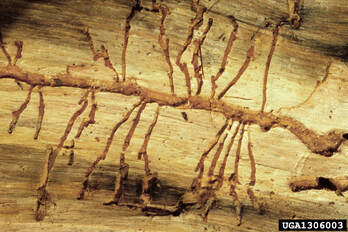|
6/25/2020 5 Comments Sagebrush: Nevada's State Flower Photo: State Symbols USA Photo: State Symbols USA Sagebrush is a large part of Nevada's ecosystem. Its scientific name is Artemisia tridentata, comes from the Greek goddess: Artemis. A unique characteristic of this plant is its medicinal purposes that were used by the Native Americans of the area. Some medicinal benefits from the leaves of sagebrush include treating headaches, colds, internal bleeding and lessening the effects of infected wounds. While the leaves are edible, it gives off a very bitter and pungent taste. Not only did the Natives use sagebrush for its medicinal benefits, but the bark could also be used to weave mats and other materials. Another reason that sagebrush was determined as the state flower is because it is so apparent to the area. Due to Nevada’s dry climate, the soil is very sandy and cannot hold water well. This makes perfect conditions for sagebrush to thrive. With the historical background and importance of sagebrush, it makes sense that it has been determined the state's flower. It also appears on the state’s flag as well as the state’s song! Sources: https://www.fs.fed.us/wildflowers/plant-of-the-week/artemisia_tridentata.shtml https://statesymbolsusa.org/symbol-official-item/nevada/state-flower/sagebrush
5 Comments
6/15/2020 1 Comment Fire Ecology and Bark Beetles Trails in a pine tree built by bark beetles. Photo: Island Press Trails in a pine tree built by bark beetles. Photo: Island Press Many of you may have heard of the beetle infestation that has devastated North American forests over the last decade. It may surprise you that this infestation is directly linked to our mis-management of wildfires over last century.“Fire suppression” was the leading forest-management strategy of the 20th century, where any and all wildfires were treated as unnecessarily destructive and immediately put out. However, by squelching every wildfire, we have effectively allowed wood (fuel) to stockpile, leading to the inevitable, uncontrollable, and devastating series of wildfires that we have been enduring for the past decade. We have since learned that wildfires are a critical step in the cycle of a healthy forest system. Native Americans were fully aware of this fact, and used wildfire as a tool to promote the growth of desired plants in subsequent seasons. Without fire, forests become overgrown. Overgrown forests are more susceptible to massive fires since they hold more fuel, and induce drought by increasing competition among plants for a limited water supply. In short, an overgrown forest is a weaker forest. Enter: the bark beetle. There are several species of bark beetle that have contributed to the recent infestation and all are native to the southwest. Bark beetles perform the critical ecological duty of sending weakened trees back into the cycle of decomposition, essentially “thinning” the forest of unhealthy trees. However, when the entire forest is weakened through drought (both natural and unnatural), there is no barrier to the beetle’s expansion. So what can we do? We can’t just let every wildfire burn! New forest-management tactics have recently been implemented which cater to the needs of both people and forests. In areas farther away from human activity, professionals use “controlled burns” to maintain forest health in a natural way; while near inhabited areas, “ecological thinning” is used to manually clear forests of excess growth. Fire ecology is a prime example of how human ingenuity can often fall short of understanding how interconnected our ecosystems can be. There is still so much that we do not know, and hopefully, by being more cautious about how we tamper with our ecosystems, we can avoid such destructive consequences. |
AuthorThis blog is managed by the staff and volunteers of Galena Creek Visitor Center. We write about parts of the natural world that we find fascinating and want to teach others about, as well as keeping you updated on the Visitor Center and park. If you want to learn more, please sign up for our monthly newsletter, where we share upcoming events, updates on the ecology of the park, and highlights from each month. Archives
October 2021
Categories |
 RSS Feed
RSS Feed
